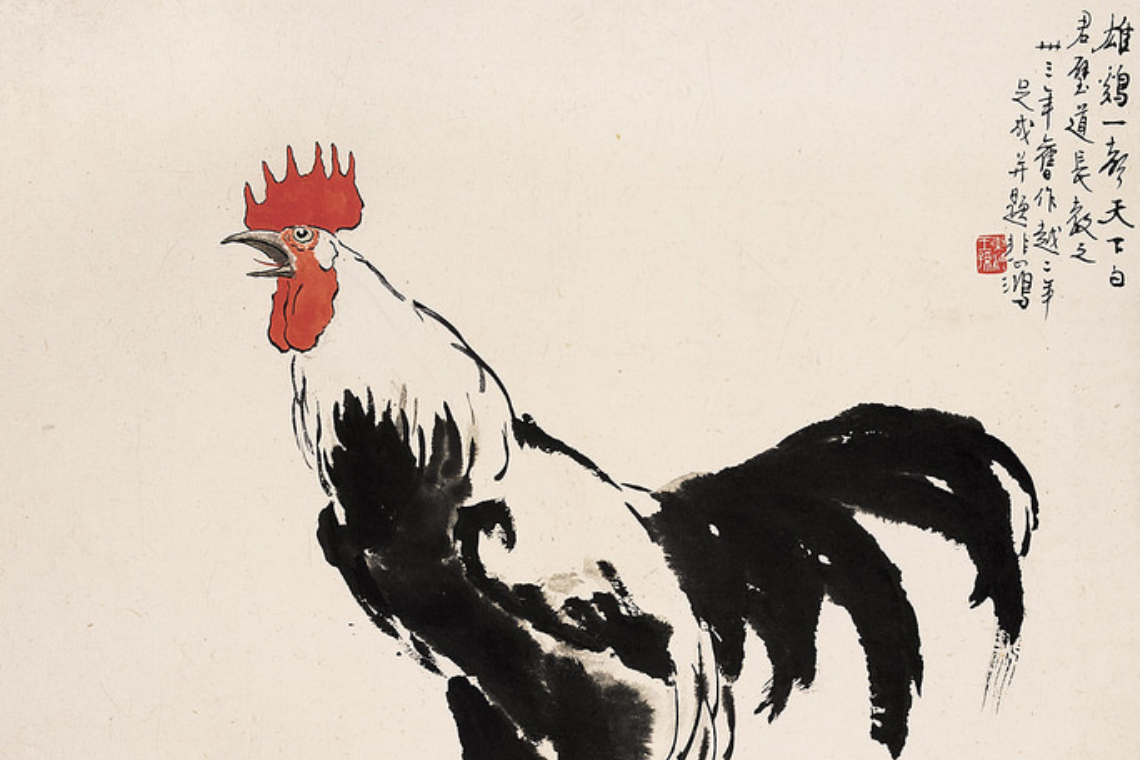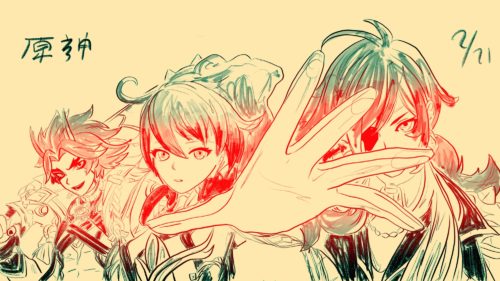The Year of the Rooster
A roundup of Spring Festival traditions and news.

At midnight of January 27, 2017, the Year of the Monkey ends and the Year of the Rooster begins. The New Year holiday is known in Chinese as the Spring Festival (春节 chūnjié), though it is known internationally as the Lunar New Year, or the Chinese New Year, even though other East Asian cultures celebrate it. It is the most important festival in China, and the equivalent of the American Thanksgiving in the sense that most people try to spend the holiday with their families.
There is a weeklong public holiday for the Spring Festival in the mainland and in Taiwan, but the traditional end to the celebrations is the Lantern Festival (元宵节 yuánxiāo jié) on the 15th day of the Lunar New Year, which this year falls on February 11.
In the Chinese zodiac, 2017 is the Year of the Rooster, the 10th zodiac sign in a 12-year circle. According to the Chinese cosmological theory of five elements, this year’s elemental sign is fire (the others are metal, wood, water, and earth). This year will be the first Fire Rooster since 1957 and it will take another 60 years for the rooster to match with the fire sign again.
The world’s largest human migration

A feature of the Spring Festival is the world’s largest annual human migration, as hundreds of millions of people go home to celebrate with their families, and this year is no exception. Known as chunyun (春运 chūnyùn), the 40-day period started this year on January 13 and will last until February 11. A total of 2.98 billion trips are expected to be made nationwide as migrant workers and students return home. The chunyun phenomenon also offers a glimpse of how modern China is changing: With the world’s longest high-speed railway network of 20,000 kilometers and the second-longest rail network of 121,000 kilometers, the country now has the capacity to transport a massive number of people during a travel season. This year, Guangzhou, Beijing, and Shanghai, homes to millions of migrant workers from less developed areas, ranked as the top three among all departure cities. Along with the domestic travel frenzy, more and more Chinese are celebrating the festival by escaping the country. According to the online travel service Ctrip.com, Chinese will travel to 174 destinations outside mainland China for 9.2 days on average during this year’s holiday period.
Food, food, and more food!
Food is the most important part of the Spring Festival celebrations. Traditions vary across China: Dumplings are the essential dish in much of northern China, but not in many areas of the south. Fish is perhaps the most common dish nationwide because it is associated with prosperity and good luck — in Mandarin and many regional dialects, the word for fish, yu (鱼 yú), is a homophone for surplus. The Global Times has a good roundup of different regional tastes for the Spring Festival banquet here.


TV
A core element of the Chinese New Year’s Eve for mainland Chinese is watching the New Year Gala (春晚 chūnwǎn) broadcast annually by China Central Television (CCTV). The gala, a variety show of four and a half hours, normally includes song and dance, comedic skits replete with buzzwords from the last year, acrobatic performances, and magic tricks. Despite complaints about the show’s unchanging style, an estimated 1.033 billion viewers watched the 2016 show live. For a review of the 2017 Spring Festival Gala, please see our The China Project article “The biggest TV show in the world.”
Fireworks
Firecrackers are a big part of the celebration. Invented in China about 2,000 years ago, firecrackers are traditionally believed to fend off evil spirits with their loud bangs. The first big firecracker fest is at midnight on Lunar New Year’s Eve, with another spike in fireworks on fifth day of the New Year, but you can hear small explosions all over the country for several weeks before the holiday and lasting up until the Lantern Festival that ends the celebrations.
In the 1990s, the high rates of fires and injuries caused by fireworks led Beijing to completely ban their use. But in 2005, the city unbanned them, much to the delight of many enthusiasts, who made the city sound like a warzone. The firecracker fever reached its height in 2009, when staff from China Central Television arranged a huge fireworks display on the construction site of the still incomplete CCTV building complex, leading to a massive fire that severely damaged one of the buildings. Since then, Beijing has placed restrictions on the use fireworks during Spring Festival. Concerns about pollution in the capital and other large cities have further dampened official enthusiasm. Shanghai issued restrictions in 2015, while Beijing this year further limited firework sales and required government officials to set a good example by not setting off fireworks and firecrackers.
Shopping
For retailers and restaurant owners, a surge in consumption is almost guaranteed. The 2016 Spring Festival witnessed a total of 754 billion yuan ($109 billion) in retail sales during the seven-day holiday, marking a growth of 11.2 percent from the same vacation period a year earlier. Meanwhile, as Chinese buyers have become one of the driving forces of global luxury consumption, brands such as Louis Vuitton and Gucci also try to tap into the Spring Festival economy by releasing Chinese New Year–themed products such as rooster-embroidered handbags and scarfs.
Digital Spring Festival
Traditions of Chinese New Year have been digitized. Many Chinese have forgone hongbao (红包 hóngbāo), the traditional gift of cash inside a red envelope, and instead make an online transaction that visually imitates it. Popular messaging apps such as WeChat and payment apps such as Alipay invented and drove this trend. According to a survey conducted by United Overseas Bank (UOB), 75 percent of red envelopes are now exchanged through smartphones. In an effort to attract users, various internet platforms launched promotional campaigns, such as the “red envelope battle” between WeChat and Alipay in 2016. This year, however, Tencent, the parent company of WeChat, announced an end to any “red envelope” promotions targeting the upcoming Chinese New Year. China Daily applauded the decision, as it allows Chinese to truly “enjoy the holiday with their relatives and friends” instead of having their eyes glued to their smartphones.

Stress for singles
Despite a euphoric atmosphere all across the country, the festival can be painful for some Chinese. One such group: single men and women who are pressured by their parents to marry. In order to avoid annoying questions from their family members on why they are not settling down, some people rent fake boyfriends or girlfriends: Read a The China Project feature on this phenomenon here.
In addition to interrogations regarding marriage, other criticism that young Chinese often face while spending the holiday at home includes awkward questions about their salaries and pressure to lose weight. What’s on Weibo has a good explanation of a song called “Spring Festival Survival Kit,” which describes young people’s uncomfortable Chinese New Year experiences. Online video celebrity Papi Jiang also made a video (in Chinese) on how to make a preemptive strike before receiving a barrage of verbal attacks from meddlesome relatives.
You can’t get away from Donald Trump
Inspired by Trump’s signature hairstyle and hand gestures, a shopping mall in the northern Chinese city of Taiyuan placed outside it a giant rooster sculpture with many features that remind people of the U.S. president. The wide attention that the sculpture drew led to a boom for a company manufacturing giant inflatable Trump rooster balloons.
Further reading
- The Year of the Rooster, on reading / China Heritage
- The Year of the Rooster, on eating, injecting, imbibing & speaking / China Heritage
- The Year of the Rooster — what it means / China Highlights
- How to prepare for Lunar New Year, according to my 80-year-old Cantonese grandmother / Quartz
- Chinese New Year: Inside the world’s largest trek / NYT (paywall)
- Why this Chinese New Year will be a digital money fest / BBC
- New box office highs expected this Chinese New Year / Asia Times
- Happy Chinese New Year in 8 dialects / The Straits Times





